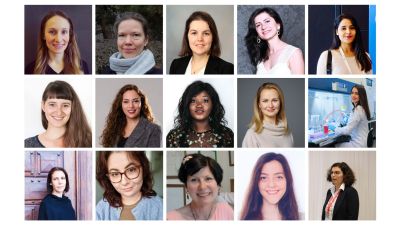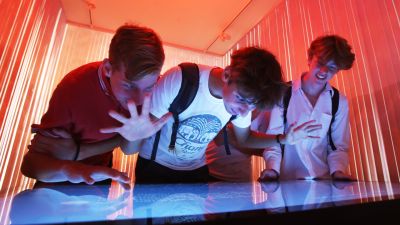Janet Tassell is an Assistant Director and Professor at the School of Teacher Education at Western Kentucky University in Bowling Green, Kentucky. During the winter semester, she spent three months as a Fulbright Scholar at the Faculty of Education at Charles University, where she conducted research with teacher candidates to apply mindfulness practices in mathematics instruction, to strengthen students’ growth mindset, and lessen math anxiety.
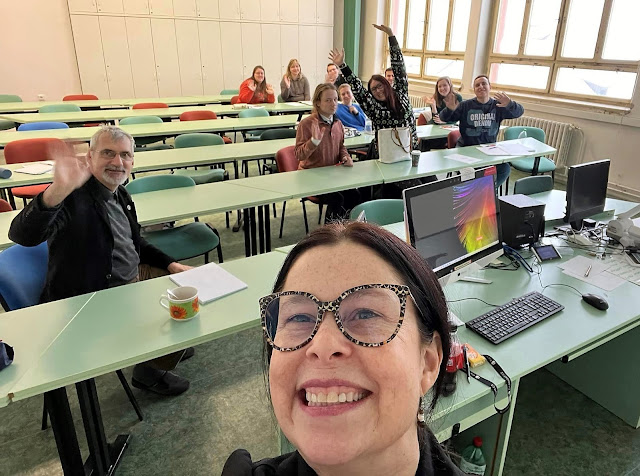
Janet Tassell and her colleague Ladislav Kvasz during their course Classical Reading for Mathematics Education at CU, autumn 2022.
Your Fulbright project was titled: “Mindfulness Teaching Practices in Mathematics”. Could you tell us more about it?
At Charles University, I had the unique opportunity to conduct a research replication study of Math Mindfulness for preservice elementary teachers. The research consisted of a pre/post set of surveys that a control and intervention group took in October and then again in December of 2022. The intervention group also participated in a three-seminar series focusing on strengthening mathematics teachers’ mental health in the areas of mindfulness techniques, growth mindset, lowering anxiety, and increasing self-efficacy in teaching mathematics.
How did you come up with this - for Czechs - unusual combination of mindfulness and math teaching?
As a teacher, I was aware that students suffer from math anxiety, and because I had a personal positive experience with mindfulness meditation I started thinking about how to connect these two fields, how to help our students. So my colleague, Natasha E. Gerstenschlager, and I created a seminar series about mindfulness components and the teaching of mathematics combined. Many of these strategies can be applied across multiple disciplines, far beyond teaching mathematics.
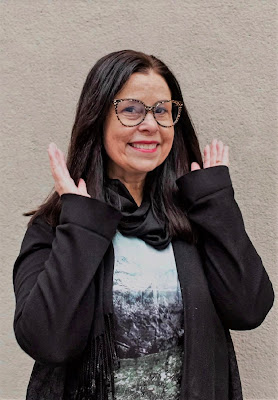 Could you give us some examples of mindfulness activities in your class?
Could you give us some examples of mindfulness activities in your class?
Two of my favorite experiences that I utilized within the seminar series are: Math Wall Fantasy and Programmed Positive Visualization. In the Math Wall Fantasy, the participants joined in a guided imagery experience where I had them breathe, relax, and go on a journey of visualizing themselves walking outside on a beautiful day only to encounter a wall reaching every direction to infinity. They then had time in their visualization to decide what to do. After the guided imagery experience was over, we discussed what they did and how this connects to what they do when encountering a challenging math problem.
An example that came out of our seminar was one student said she dug a hole under the wall and then crawled through. Another burst through the wall. Both of these students also persevere in problem solving. In contrast, another student explained that she went over and sat under a tree, relaxing and pondering what to do rather than getting upset. She likened this to taking her time to work through difficult math problems but also admitting that she sometimes avoids a challenge.
The Programmed Positive Visualization activity began with us learning about a Free Throw Study from 1969 where three groups of students were assessed their first and last day of a 20-day study to see if there was improvement in their free-throw percentage from start to finish. One group practiced every day for 20 days and showed 24% growth. The second group practiced the 1st and 20th days, without any practice in between, showing 0% growth. However, the third group practiced the 1st and 20th days only, but visualized making the free throws “successfully” each day in between, testing with 23% growth. The participants and I used this idea to then do a guided meditation for how to take something they are working on, like a mathematics test or teaching a math lesson, and visualize themselves being successful over several days.
What are the current trends in teaching? How to support and create a pleasant and engaging atmosphere in the classroom?
I believe some of the most important trends of teaching are to focus on student-led engagement with hands-on learning. Students need to have a voice in their learning and personalized options.
Mindfulness is about focus and the present moment. From your experience, is distraction a rising problem these days? Can you see any changes in students' behavior in the last decade that might be connected with social media?
Yes, social media and general capacity to interact with others rather than isolating oneself is so critical. Teachers are still needed. Live, qualified, and compassionate people to be teachers! It is up to us to ensure teachers are healthy and have capacity for growth in self care.
Mindfulness is still not so widespread in the Czech Republic, how have students responded to the use of mindfulness techniques in conjunction with mathematics teaching?
During the seminar series, the response was positive. The participants joined the project for a variety of reasons – some due to interest in mindfulness and some due to a personal experience with math anxiety.

Photo from last of the three seminars at Charles University.
In addition to your research, you also co-taught Classical Readings in Mathematics Education, and guest lectured in a course on Secondary Math Methods. How was it? Did anything surprise you?
Within the classroom, I had a variety of opportunities. I co-taught the Classical Reading for Mathematics Education course with Dr. Ladislav Kvasz. My role was to augment the course with USA topics for seminar sessions from which the CU students would gain insight. I taught the students about engagement strategies for teaching and presenting, gifted education for math students, mindfulness teaching practices, and the math assessment cycle (descriptive feedback, formative/summative assessment, and grading).
I shared with my host Dr. Nad’a Vondrova’s Secondary Math Methods course mathematics norms for the classroom and a way to incorporate eight standards for mathematical practice. Through these experiences, I was able to witness the excitement of the future teachers and stretch them in engaging with educational practices from USA and enhance their experience of English language.
During your stay in Prague, you also shared your research across several European countries. What was your experience? Did you notice any commonalities between the countries, or were they all unique in their own way?"
I was able to share my math mindfulness research through a visit within Czech Republic to Brno, Masaryk University, Math Pedagogy Department and in Budapest for the MA Education Psychology class with ELTE: “Math Mindfulness, Growth Mindset, and Math Anxiety: What Role do These Play in Teacher Preparation” In both settings, I was able to conduct mindfulness techniques, like the “Math Wall” activity to encourage conversation about how to lower math anxiety and increase growth mindset.
I also shared research on how to meet the needs of high potential/gifted mathematics students through differentiation, problem solving, and increased rigor. I shared with undergraduate preservice teachers at Krakow U., Poland, graduate psychology students at Vienna U. (online) and Babes-Bolyai U., Cluj Napoca, Romania, Radboud University’s RITHA future gifted specialists in Netherlands, and with the mathematics department at Karlstad U. in Sweden. In each of these presentations I learned about an incredible range of strides that can still be made in meeting the needs of gifted mathematics children.
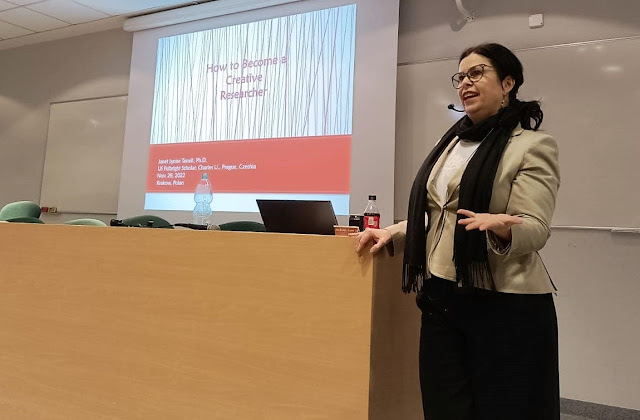
Janet Tassell during a lecture for undergraduate preservice teachers in Krakow Poland, November 2022.
Why did you actually choose Charles University for your Fulbright stay?
The Czechia Fulbright team responded positively to my query immediately with suggestions. After researching the universities and country’s educational design, I found Charles University in Prague as a great fit! Dr. Nad’a Vondrova welcomed me to apply and partnered with me in my design as a host for the Fulbright application. She encouraged me to connect to the research done by Dr. Hejny and others as well. I was impressed with the accomplishments of the mathematics pedagogy department.
Right now you are back in Kentucky, how do you reflect your Fulbright experience? What is your biggest takeaways?
No other experience in my career has stretched me as a professional in connecting culturally and personally to meet the needs of students and lecture participants. The value of international immersion has no match in the gift of growth. My experiences that I reflect upon are ever-present, swirling and percolating in my memory. Thankfully, my university sponsored a lunch and learn in which a large gathering of colleagues attended to hear about my experience. Students were wonderful at CU which made the experience that much better. Their participation in my research was critical to my mission and gave me the opportunity to see how the ideas I have presented are important internationally.
When we met for the first time at the beginning of your stay at Charles University, I asked you about the ideal outcome of your project. You mentioned creating something bigger, something outside the seminar series that can help math teachers. What progress have you made on that front, and do you have any specific ideas in mind for how to achieve this goal?
Currently, I have almost finished with the last of the qualitative analysis and have begun writing up the results from the study. So far, the seminar series hold much interest in sharing broadly and in expanding beyond the pilot at Western Kentucky University and the replication study at Charles U. My hope is to publish in a journal and to potentially put together a book. My dream would be to impact all future teachers of mathematics to be mentally healthy with the self efficacy aligned with a growth mindset.
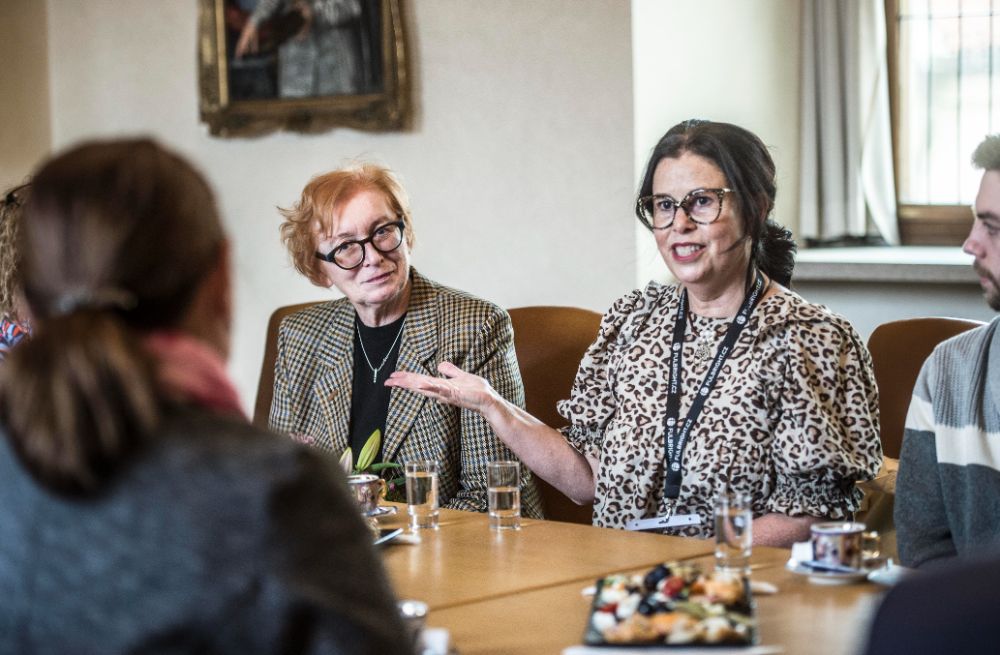
Janet Tassell and Hana Ripková, director of Czech Fulrbight, at Charles University.
Have you planned or already started any further collaborations or projects with Czech colleagues?
I have a couple of projects in progress that are in progress with CU faculty in elementary math methods. These colleagues invited me to continue to interact and support their efforts. Beyond the CU faculty, I have been meeting with and supporting a doctoral student in Prague and in Cluj Napoca, Romania. I have also been working to coordinate a student teaching placement for our USA preservice teachers to collaborate in Budapest and in Prague. Another adventure is to collaborate with teachers and Radboud University in Netherlands with gifted mathematics.
You are a very passionate and enthusiastic teacher. What motivates you? Do you have any teaching dreams?
Wow – I love when students reach their dreams through education. Seeing their growth and success is the ultimate. Being in this career at WKU for 15+ years now I have students going on to get MAE and doctoral degrees and do wonderful work – including math coaching and university teaching. Productive and academically strong teachers with open-minds and welcoming/engaging classroom cultures is my goal. Ultimate dream – another Fulbright award to continue and revisit this work!

